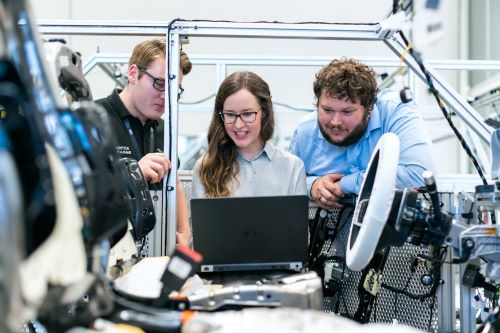

Technological advancements in automotive manufacturing are continually reshaping the way vehicles are designed, produced, and function. Among these innovations, ABS (acrylonitrile butadiene styrene) injection molding stands out as a disruptive force.
According to Statista, the global automotive manufacturing industry is worth $2.52 trillion. ABS injection molding is currently altering traditional manufacturing processes and offering unparalleled benefits to modern automakers. This versatile technique, which helps create intricate parts and components, has emerged as a game-changer in the automotive industry.
Here, we explore a few ways in which ABS injection molding is revolutionizing automotive manufacturing.
Lightweight Design Revolution
As discussed by Rachel Bustin, weight reduction is a perpetual pursuit in automotive engineering, as it directly correlates with enhanced fuel efficiency and performance. That’s why modern cars are lighter than ever, and they will only continue to get lighter as the years go by.
ABS injection molding enables the production of lightweight components without compromising on strength or durability. By utilizing this method, automakers can design intricate yet lightweight parts, such as interior panels, trim pieces, and structural elements.
The ability to create complex geometries with ABS injection molding allows for optimized designs that prioritize both functionality and weight reduction. This, in turn, contributes to more fuel-efficient and agile vehicles.
Enhanced Design Flexibility
Traditional manufacturing techniques often impose limitations on design freedom, hindering the realization of innovative concepts. ABS injection molding breaks down these barriers by offering unparalleled design flexibility.
Automakers can leverage this technology to produce parts with intricate shapes, fine details, and customizable features that were previously unattainable. ABS injection molding empowers designers to push the boundaries of automotive design, resulting in visually striking and functionally superior vehicles.
Superior Material Properties
The choice of materials significantly influences the performance, durability, and aesthetics of automotive components. According to Jiga, ABS resin is renowned for its exceptional mechanical properties, thermal stability, and chemical resistance. Therefore, it is, by default, the material of choice for many automotive applications.
ABS injection molding harnesses the full potential of this versatile material, allowing for the creation of parts with superior strength and dimensional stability. From interior trim pieces to exterior body panels, ABS injection-molded components deliver unparalleled performance and longevity.
Integration of Advanced Technologies
The automotive industry is at the forefront of technological innovation, with advancements such as electrification, autonomous driving, and connectivity reshaping the driving experience. ABS injection molding facilitates the integration of these advanced technologies into vehicle design and production.
From incorporating sensor housings for autonomous systems to designing intricate infotainment system enclosures. ABS injection molding provides a versatile platform for realizing the next generation of automotive technologies. By seamlessly integrating these advancements into vehicle components, automakers can deliver safer, more efficient, and technologically advanced vehicles to consumers.
Streamlined Production Processes
As reported by AP News last year, the US is currently seeing a strong demand for new vehicles. In fact, the whole world is seeing such growth in demand for vehicles. Under such circumstances, efficiency is paramount in modern automotive manufacturing, where time-to-market and cost-effectiveness are critical factors.
ABS injection molding streamlines production processes by simplifying tooling, reducing cycle times, and minimizing material waste. Traditional methods like machining or casting often entail multiple manufacturing steps and extensive post-processing. ABS injection molding, however, enables high-speed, automated production of complex parts in a single operation.
This accelerated production pace translates to shorter lead times, increased productivity, and ultimately, cost savings for automakers.
Frequently Asked Questions (FAQs)
Why is ABS used in injection molding?
ABS is widely utilized in injection molding because of its advantageous traits. These include durability, a low melting point, recyclability, and exceptional resistance to chemicals and heat. Additionally, it offers ease of processing and can be molded into various shapes and sizes.
What is the process of injection molding in the automotive industry?
Within the automotive sector, injection molding initiates with the plastic pellets melting process, subsequently injected into a mold cavity under substantial pressure. As the molten plastic solidifies within the mold, it adopts its intended shape, eventually being discharged as a finalized automotive component. This method facilitates the efficient mass production of intricate and robust parts.
Why are modern cars built so light?
Modern cars are built lighter to improve fuel efficiency and reduce emissions, meeting stringent environmental regulations. Lighter materials, such as aluminum and carbon fiber, are increasingly used in car construction to achieve this without compromising safety or performance.
In conclusion, ABS injection molding represents a paradigm shift in automotive manufacturing. It offers unparalleled advantages in terms of design flexibility, production efficiency, material properties, technological integration, and environmental sustainability. As the automotive industry continues to evolve, ABS injection molding stands poised to play a central role in shaping the future of mobility.


